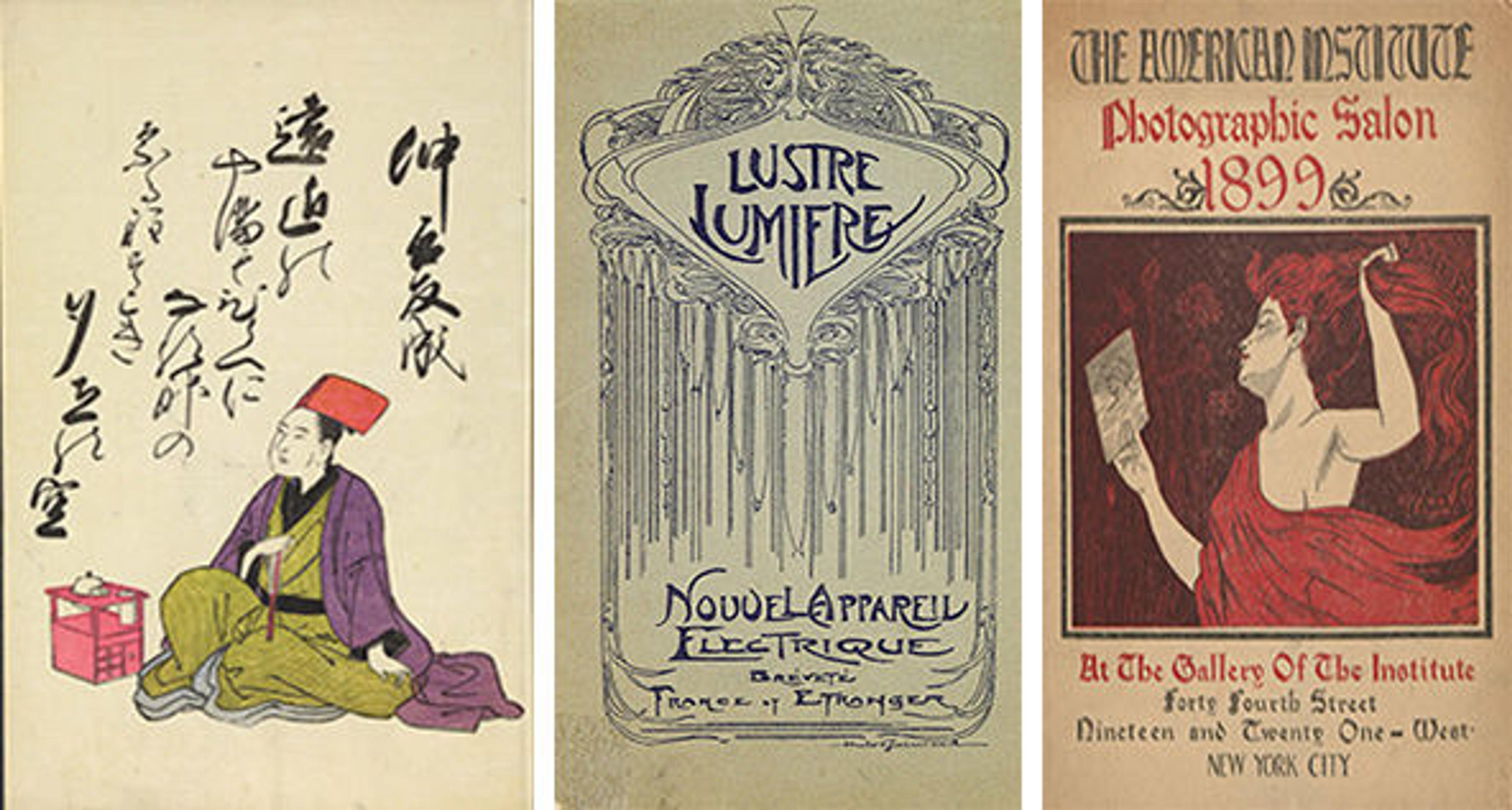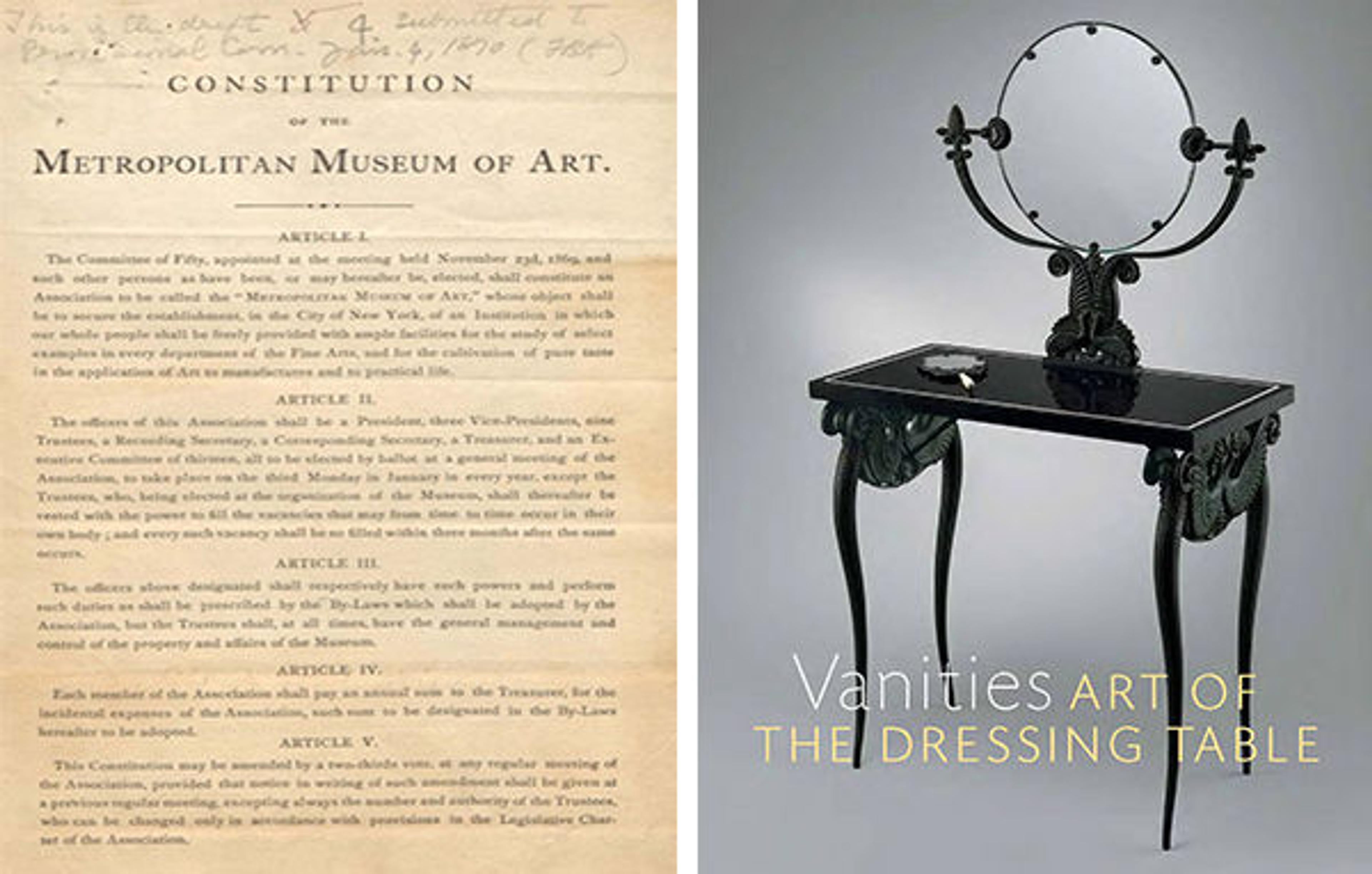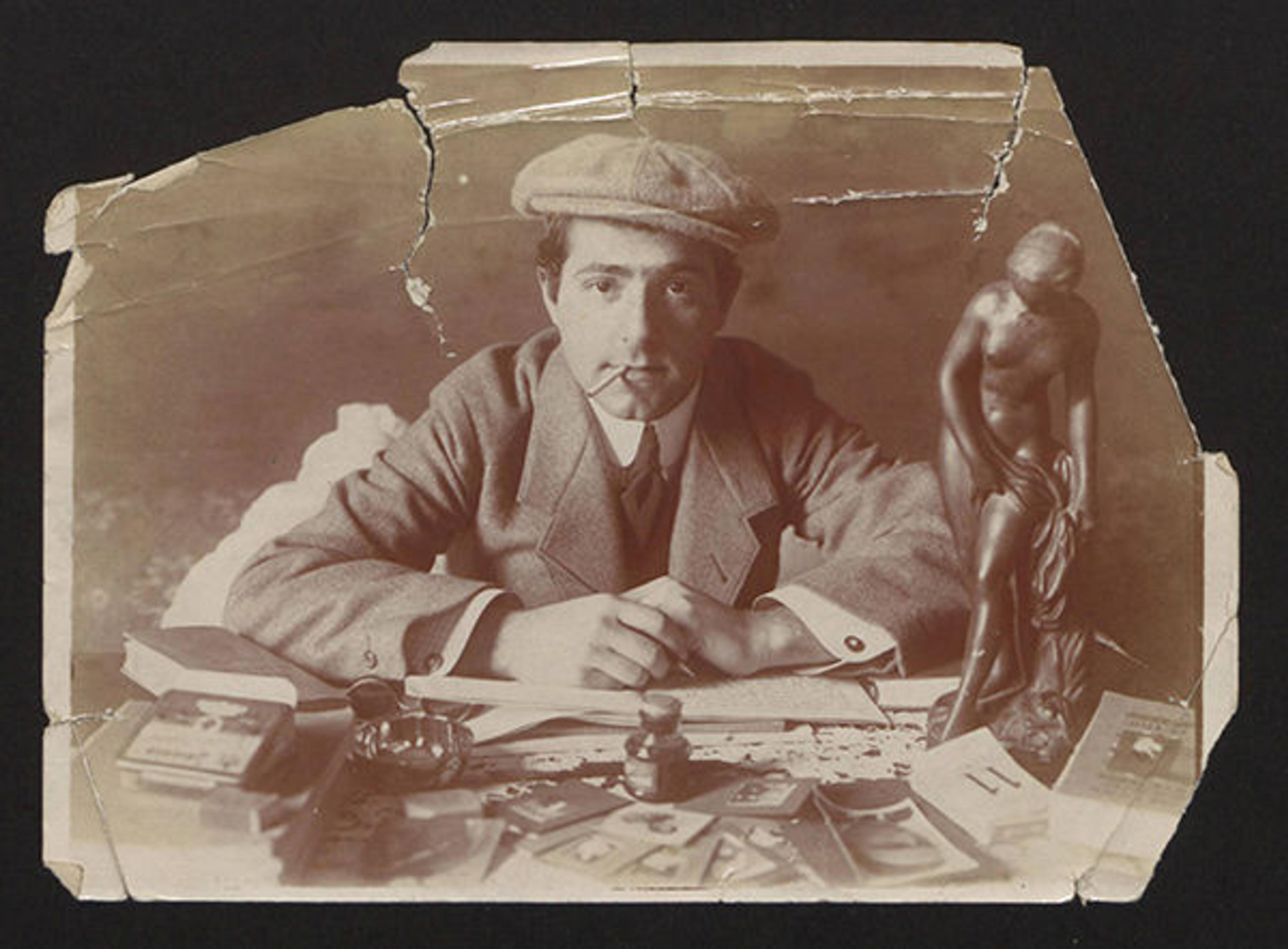If You Build It, One Million Pageviews Will Come: A Digital Collections Story

Left: From the Japanese Illustrated Book collection, an illustration from Collection of Satyric Verse Poets (Mutsu kami kyōka awase 陸奥紙狂歌合). Center: From the Trade Catalogs collection, the cover of "Le Lustre Lumière": [Nouvel Appareil Electrique] Breveté en France et à l'Étranger. Right: From the Pictorialist Photography Exhibition Catalogs collection, the cover of Catalogue of the American Institute Photographic Salon
«In Field of Dreams, Kevin Costner's character famously hears the words, "If you build it, he will come." And sure enough, by the film's end Costner has built it and the people have come. It is Hollywood, so of course everything works out in the end.»
Right now libraries the world over are in a building phase. We are all busily building up vast collections of digital stuff—feverishly digitizing books, manuscripts, fashion plates, photographs, and more. We are all doing this with the faith that, one day, "[people] will come" to our growing collections of digitized material, but we cannot know for certain that they will. For this reason alone the remarkable upsurge in usage of our Digital Collections in 2014 has been so tremendously heartening, as it gives one hope that perhaps it is true: If you build it, they really will come.
In 2012, the Museum libraries' Digital Collections received 135,000 pageviews. By 2013, that figure had climbed to 500,000. This year that figure doubled to more than one million pageviews! One of the reasons for this huge spike is the quality of the material we are making available online. As readers of In Circulation will know, the Digital Collections contains an immensely diverse range of material.
The Metropolitan Museum of Art Publications, which strives one day to be a comprehensive resource for all Museum publications from the Met's founding in 1870 to the present, is our most heavily used collection. To get some sense of the scope of this collection, here is the Museum's 1869 Constitutionalongside the 2013 exhibition catalogue for Vanities: Art of the Dressing Table.

Left: The Metropolitan Museum of Art's 1869 Constitution. Right: 2013 exhibition catalogue for Vanities: Art of the Dressing Table
Then there's our Costume Institute Fashion Plates collection, featuring an array of sometimes colorful, sometimes quite bizarre fashion plates. Below you'll see the brightly illustrated "robes de garden-party" from 1921 next to a plate from a series of Mardi Gras–themed items. If one looks closely, the words "Goblin Monster" are written faintly in pencil beneath this strange-looking creature, and in the upper right corner you can read, "Costume according to plate with icicles for teeth, & claws. Girdle also of icicles."

Left: Women 1921,Plate 031. Right: Mardi Gras 1, Plate 032
There's also the recently completed Brummer Gallery Records collection—an immensely important digital archive of this significant twentieth-century American art gallery, containing over thirteen thousand object cards, extensive correspondence, address cards, as well as gallery and personal photographs such as this wonderful one of a young Ernest Brummer with a cigarette dangling from his mouth as he stares confidently into the camera.

Personal photograph no. 073a: Ernest Brummer
Getting a million pageviews took more than simply publishing great resources, however. For over two years now we have actively engaged in a number of outreach initiatives. Our most successful has been our collaboration with Wikipedia, which now drives over fifty percent of the traffic to our website. This is up from literally zero percent a little over two years ago, so we're extremely pleased with the impact this initiative has had. For more information about what we have been doing with Wikipedia, you can read this GLAM-Wiki case study I co-authored with John Byrne, as well as this case study we published on the Museums Association website.
We also regularly share digitized items on Watson Library's Facebook page and on our Pinterest board, where we highlight some of the more visually striking images from the Digital Collections. Both of these social media platforms are great ways to stay engaged with all of the activities here at Watson, so be sure to start following us!
William Blueher
William Blueher is the manager of cataloging in Thomas J. Watson Library.